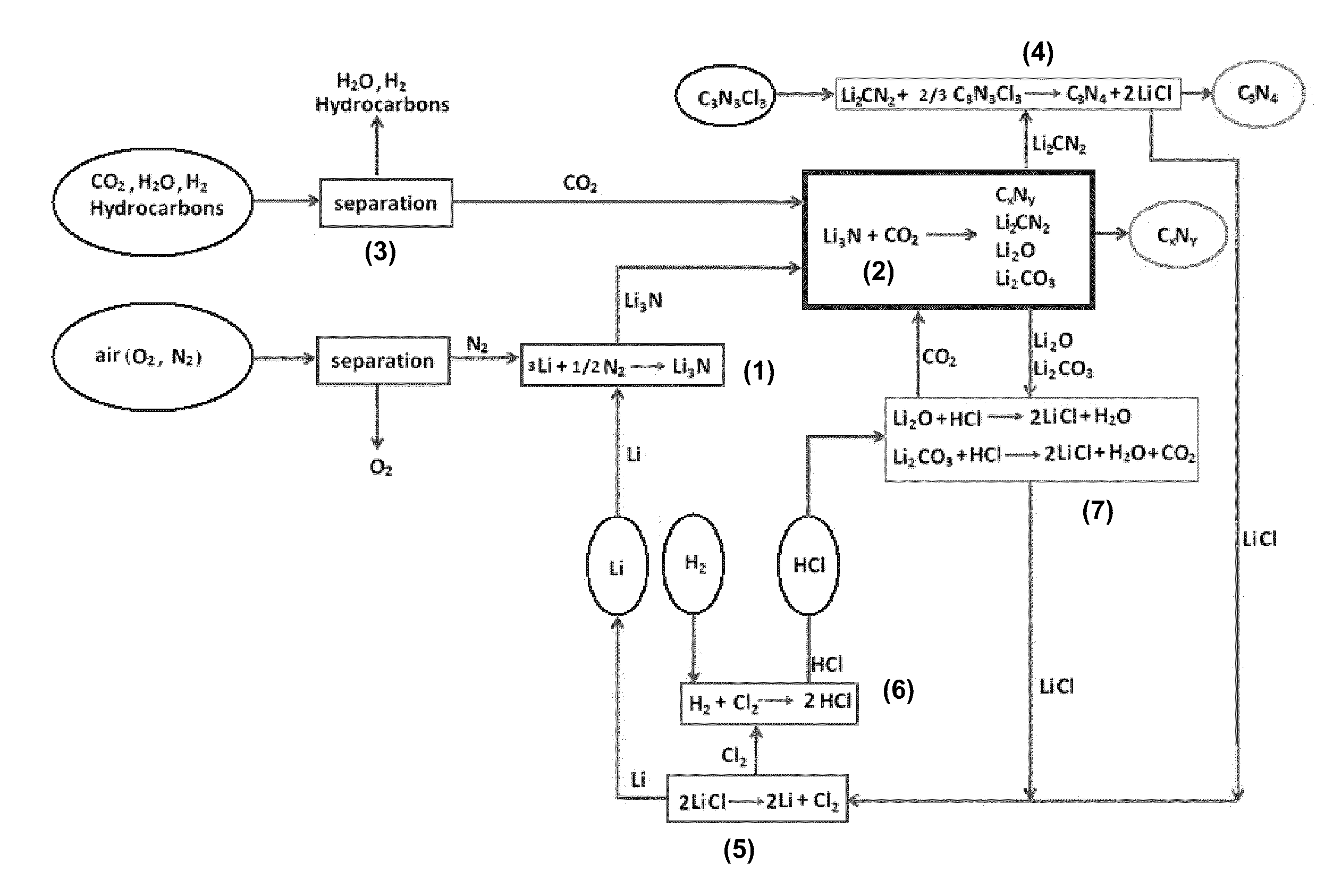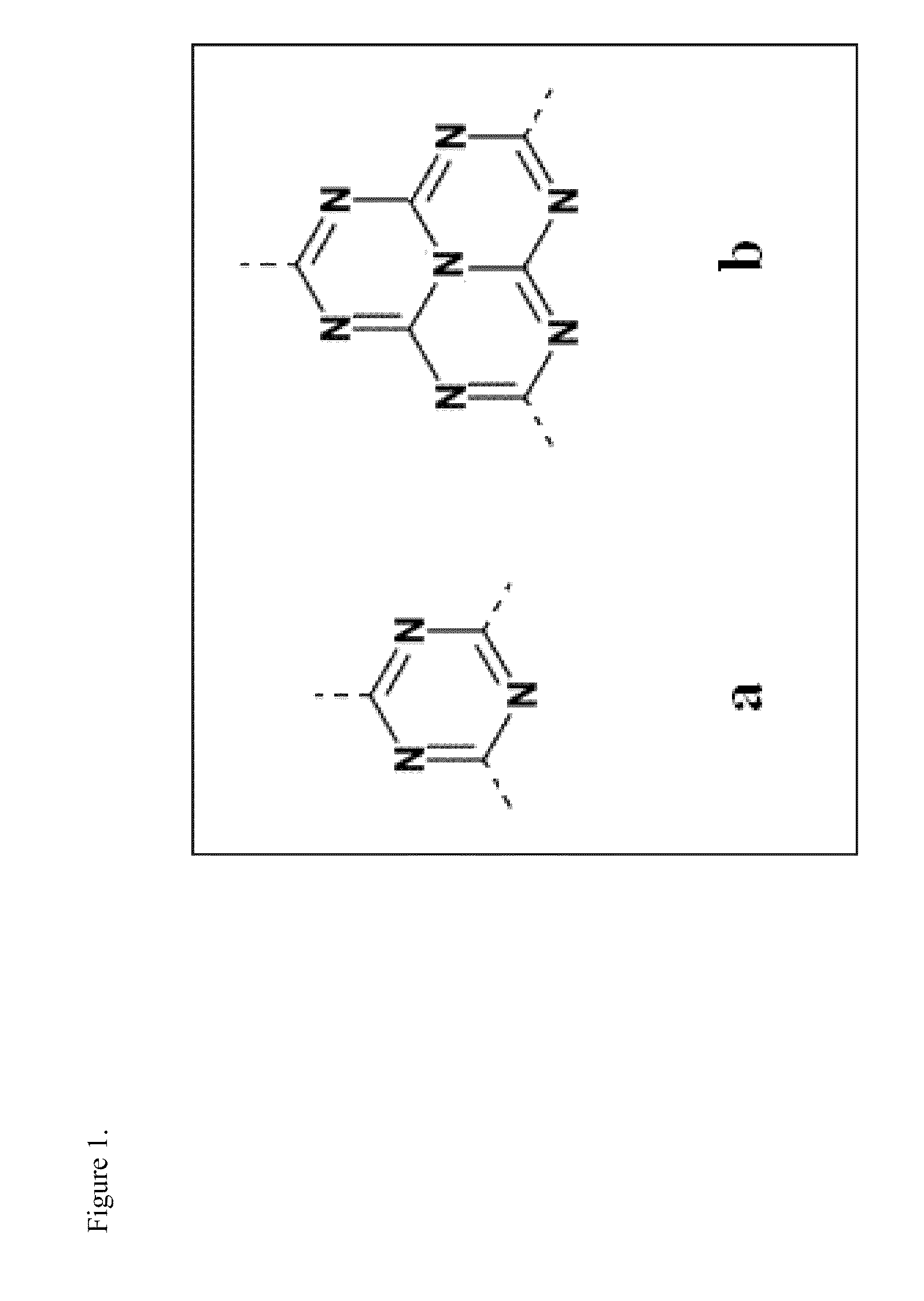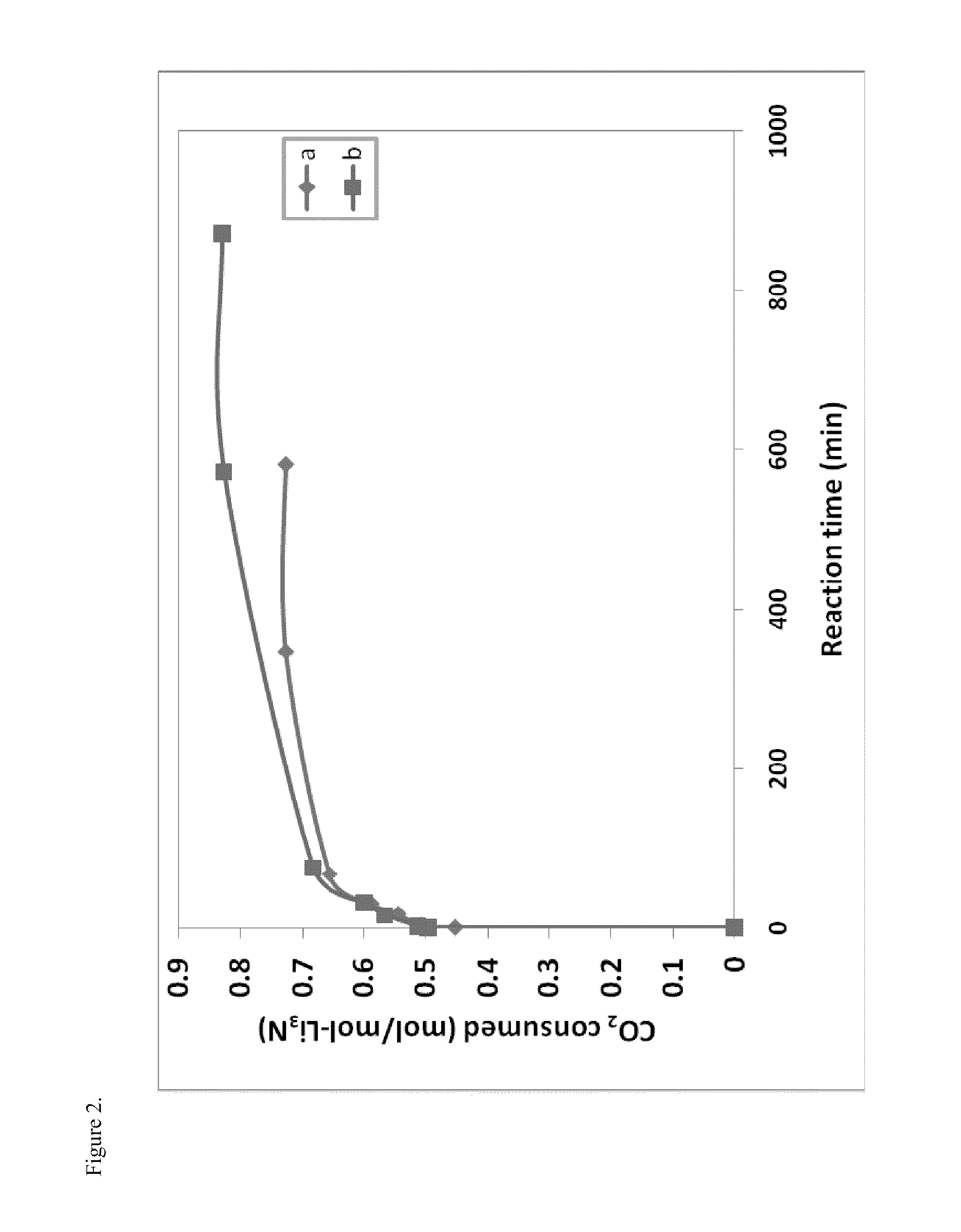Synthesis of carbon nitrides from carbon dioxide
- Summary
- Abstract
- Description
- Claims
- Application Information
AI Technical Summary
Benefits of technology
Problems solved by technology
Method used
Image
Examples
example 1
Synthesis of Carbon Nitride and Lithium Cyanamide From CO2 and Li3N
[0044]0.5 g Li3N was loaded in a reactor (a stainless steel tube with an inside diameter of 4 mm). Before the test, the solid sample was subjected to vacuum and heated to a selected temperature. The CO2 pressure change during reaction was measured with a digital pressure gauge, which was used to calculate the amount of consumed CO2. As shown in FIG. 2, the reaction between Li3N and CO2 was very fast. The amount of consumed CO2 was greater at 380° C. than at 350° C. Furthermore, the in-situ thermocouple measurement showed that the reaction was exothermic.
[0045]A light-yellow solid product was obtained from the reaction. X-ray diffraction measurements of the solid product showed that, after the reaction, all peaks corresponding to Li3N disappeared, whereas many new peaks appeared (FIG. 3). This indicated that all of Li3N was converted to other compounds by reaction with CO2. The solid product obtained from the reaction...
example 2
Synthesis of Carbon Nitrides From CO2 and Other Nitrogen Sources
[0047]Synthesis of Carbon Nitrides From CO2 and Other Nitrogen Sources
[0048]As a comparison, thermodynamic calculations were also completed for reactions to synthesize carbon nitrides from CO2 and other N-containing compounds. The reaction between CO2 and N2 to carbon nitride (with perfect C2N2 stoichiometry) was expressed as Equation 8:
3CO2(g)+2N2(g)→C3N4(s)+2O2(g) (8)
[0049]Thermodynamic calculations showed that this reaction has very positive reaction enthalpy (ΔH°=1931-2075 kJ / mol) and Gibbs free energy (ΔG°=1957-2101 kJ / mol). This indicated that it is not a thermodynamically favorable reaction. Indeed, it was observed that no reaction between N2 and CO2 took place even at high temperature of 900° C.
[0050]Another simple and useful N-containing compound considered was ammonia (NH3). The reaction between CO2 and NH3 to produce carbon nitride C3N4 was expressed as Equation 9:
3CO2(g)+4NH3(g)→C3N4(s)+6H2O(s) (9)
[0051]...
example 3
Direct Process for Synthesis of Carbon Nitrides
[0052]A. Preparation of Metal Nitrides
[0053]To prepare nanoparticle metal nitrides, metal nitrides (Li3N, Mg3N2, Ca3N2, or AlN) will be purchased from the Aldrich Chemical Company. The original materials will be ground by ball-milling method (in argon) to obtain nanoparticles with various sizes. The sizes will be controlled by the milling time and measured by SEM and TEM.
[0054]To prepare catalyst-doped metal nitrides, metal nitride powder (Li3N, Mg3N2, Ca3N2, or AlN) will be mixed with transition metal (Ni, Pt, Rh or Ru purchased from Aldrich) as catalyst by high speed ball milling (in argon). Catalyst loading will be 0.1˜5 wt % and can be changed according to experimental results.
[0055]B. Reactions Between CO2 and Metal Nitrides
[0056]The reaction between metal nitride and CO2 will be carried out in a stainless steel tube reactor (with an inside diameter of 4˜10 mm), located in a furnace. 0.5-2 g metal nitride sample with and without ca...
PUM
 Login to View More
Login to View More Abstract
Description
Claims
Application Information
 Login to View More
Login to View More - R&D
- Intellectual Property
- Life Sciences
- Materials
- Tech Scout
- Unparalleled Data Quality
- Higher Quality Content
- 60% Fewer Hallucinations
Browse by: Latest US Patents, China's latest patents, Technical Efficacy Thesaurus, Application Domain, Technology Topic, Popular Technical Reports.
© 2025 PatSnap. All rights reserved.Legal|Privacy policy|Modern Slavery Act Transparency Statement|Sitemap|About US| Contact US: help@patsnap.com



